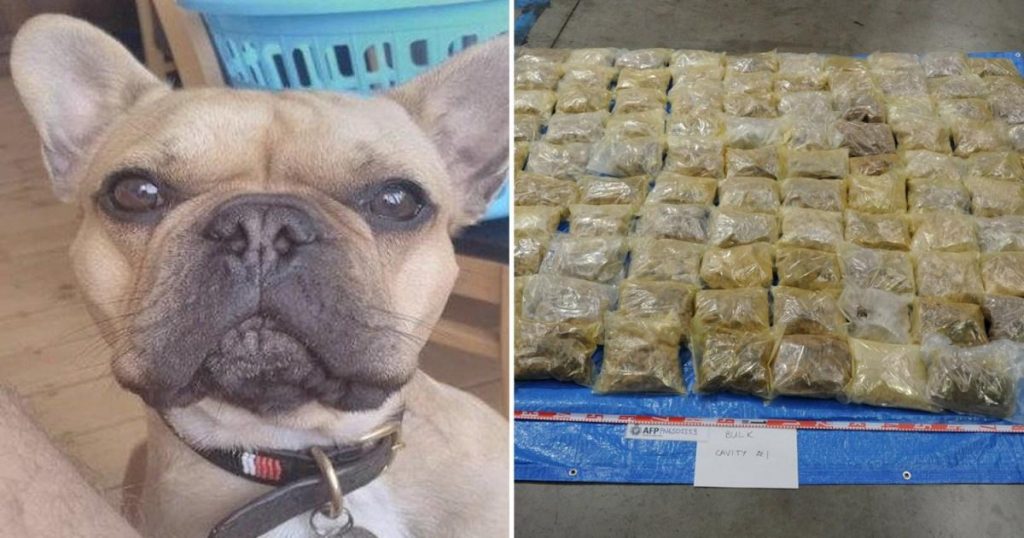Two prominent figures in an organized crime syndicate, Stefan Baldauf and Philip Lawson, have been ordered to forfeit over £1 million following their convictions for a failed attempt to smuggle a massive quantity of MDMA into Australia. The elaborate scheme, which involved nearly half a tonne of ecstasy with an estimated street value of £44 million, unraveled due to a series of seemingly inconsequential blunders, highlighting the fragility of even the most meticulously planned criminal enterprises. The case underscores the unwavering commitment of law enforcement agencies to pursue and dismantle drug trafficking networks, both domestically and internationally, and to recover the ill-gotten gains of those involved.
The operation, orchestrated by Baldauf and Lawson, involved concealing the illicit drugs within a specially modified excavator. Lawson, with his technical expertise, designed the hidden compartment within the machinery and arranged for a welder to both create and seal the clandestine storage area. The excavator was then shipped to Australia, where the drugs were intended to be distributed. However, the operation was thwarted by a combination of diligent investigative work and a series of fortunate breaks for law enforcement. One of the most critical breakthroughs came from an unlikely source: a photograph of a French bulldog named Bob.
Danny Brown, a co-conspirator in the scheme, inadvertently provided a crucial piece of evidence when he sent Baldauf a picture of his dog. The image, seemingly innocuous, revealed Brown’s partner’s phone number on the dog’s tag. Investigators, meticulously analyzing every piece of information, zoomed in on the tag and retrieved the number. This seemingly minor detail proved to be a linchpin in the investigation, linking Brown directly to the conspiracy. Furthermore, Baldauf himself contributed to his downfall by accidentally capturing his reflection in a brass door sign in a photograph sent via EncroChat, an encrypted messaging service often favored by criminal networks. This selfie, though unintentional, provided further evidence of his involvement.
The subsequent investigation and legal proceedings resulted in substantial prison sentences for the key players involved. Baldauf received a 28-year sentence, while Lawson was sentenced to 23 years. Brown, whose dog inadvertently played a pivotal role in the case, received a 26-year sentence. Another accomplice, William Sartin, who housed the modified excavator in his industrial unit, also received a 23-year sentence. The court, recognizing the significant financial gains these individuals sought through their criminal activities, imposed substantial confiscation orders. Baldauf was ordered to pay over £1 million, while Lawson was ordered to pay £182,476. Failure to comply with these orders within three months will result in additional prison time for both men.
The successful prosecution and subsequent confiscation orders represent a significant victory for law enforcement agencies. The case demonstrates the effectiveness of international cooperation and the importance of meticulous investigative work, even in the face of sophisticated criminal tactics. The seemingly minor details, such as the dog tag and the accidental selfie, underscore the importance of thorough analysis and the unpredictable nature of criminal investigations. The sentences handed down, coupled with the substantial financial penalties, send a strong message to other organized crime groups that their actions will be met with severe consequences.
The confiscated funds will be reinvested into further crime-fighting initiatives and contribute to the national treasury, demonstrating the commitment to disrupting criminal networks and recovering the proceeds of crime. The case serves as a powerful reminder that even the most carefully planned criminal endeavors can be unravelled by a combination of astute police work and seemingly insignificant details that, in hindsight, prove to be crucial pieces of the puzzle. The long prison sentences and significant financial penalties imposed on Baldauf, Lawson, Brown, and Sartin underscore the seriousness with which such crimes are viewed and the dedication of law enforcement to bringing those responsible to justice. This case represents a significant success in the ongoing fight against organized crime and drug trafficking.
The case also highlights the increasing importance of technology in both the perpetration and investigation of crime. The use of EncroChat, while intended to provide secure communication for the criminals, ultimately provided evidence that contributed to their downfall. Similarly, the seemingly innocuous photograph of the dog, readily shared in the digital age, inadvertently provided a crucial link for investigators. This duality of technology underscores the need for law enforcement agencies to continually adapt and develop new techniques to stay ahead of evolving criminal methodologies. The successful outcome of this case demonstrates the effectiveness of these strategies and the commitment to pursuing and dismantling criminal networks, regardless of the methods they employ. The substantial financial penalties, in addition to the lengthy prison sentences, serve as a powerful deterrent and highlight the financial risks associated with engaging in such illicit activities.




